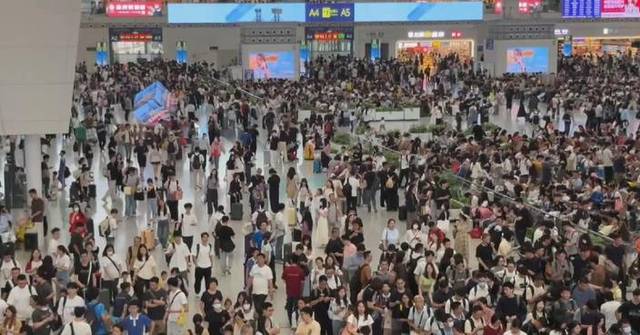Tourism Data Reaches Record High During May Day Holiday

China experienced a significant travel boom during the five-day May Day holiday, marked by surges in traffic across highways, railway stations, airports, and waterways. The railway system alone projected handling 20.4 million passenger trips on a single day, supplementing existing schedules with over 1,818 additional trains. Data indicated that expressways saw an 18.6 percent increase in vehicles during the holiday's fourth day compared to the previous day, with return trips peaking in the late afternoon. Civil aviation anticipated over 2 million passenger trips, while waterway systems expected to handle over 1.7 million.
Cultural and tourism departments reported substantial increases in tourist numbers compared to the previous year. Hunan province, for example, saw a 33.88 percent year-on-year increase with 14.4 million visitors on the holiday's second day. A-level tourist attractions in Hubei province welcomed 7.73 million visitors over the first two days, a 30.75 percent increase from the year prior. Several tourist spots in Hubei implemented crowd control measures due to reaching full capacity.
Sichuan province's A-level scenic spots received 5.19 million visitors on the holiday's first day, generating 43.65 million yuan ($6 million) in ticket revenue, reflecting increases of 21.17 percent and 19.04 percent, respectively, compared to the same period last year.
Outbound tourism sustained the momentum observed during previous holidays such as the Spring Festival and Qingming Festival. Travel platform Fliggy reported a surge in outbound tourism, with ticket orders increasing by over 130 percent and international cruise product orders soaring by 149 percent. Popular destinations included Hong Kong, Japan, Macao, Thailand, South Korea, France, Vietnam, Malaysia, Singapore, and Indonesia.
Ctrip's data showed significant growth in both inbound and outbound travel, with inbound travel orders skyrocketing by 141 percent. The national railway system transported a record high of 23.12 million passengers on May 1, a 11.7 percent year-on-year increase. High-speed train services carried 15.67 million passengers, also setting a historical record with a 16.1 percent year-on-year increase. To accommodate the growing travel demands, 13,800 passenger trains were operated, including over 2,000 additional trains.










